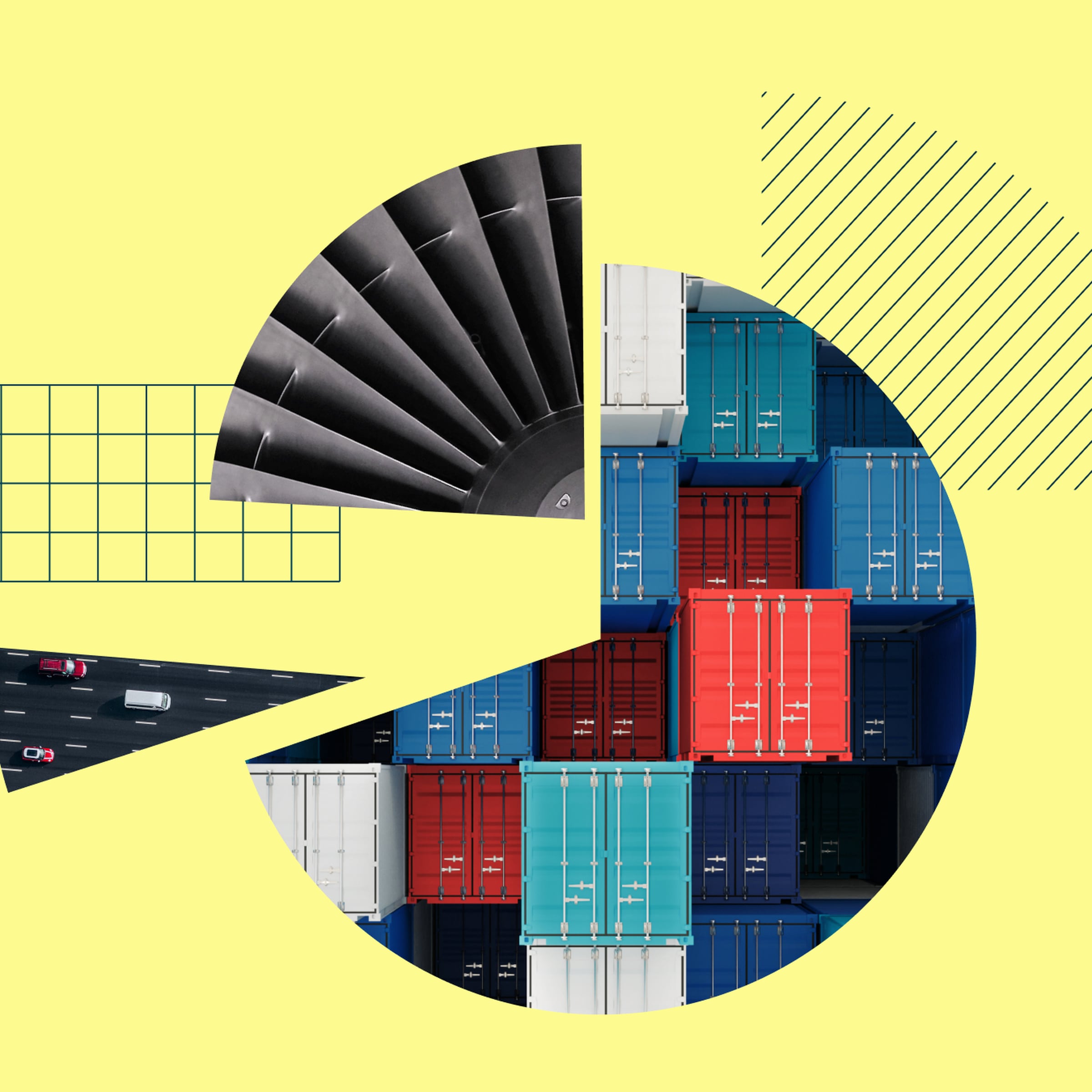The Magnificent 7 Stocks Should Stay in Your Portfolio
Panelists told the Morningstar Executive Forum that the two phases of AI are first, enablers like the Magnificent 7, and second adopters, who will form the next round of returns generators.

Many investors are worried about the year to come. The Bank of Canada held rates steady for the fifth straight time, even as inflation continues to be a thorn in the side of central banks and investors alike and fears of a recession abound.
But a panel of experts told attendees at Morningstar's latest Executive Forum—the first for 2024 — that some of these fears might be overblown. The forum, titled "The 2024 Market Outlook," addressed inflation, rate hikes, ESG, the Magnificent 7 stocks, thematic investing, and investment opportunities in 2024.
The panellists were Judith Chan, VP, Head of Multi Asset Portfolios at NEI Investments, Michael Greenberg, a senior vice president and portfolio manager for Franklin Templeton Investment Solutions, and Michael Gregory, Deputy Chief Economist & Managing Director at BMO Capital Markets Economics. The panel was moderated by Ian Tam, director of investment research for Morningstar Canada.
No Recession is the Most Likely Outcome, But Expect Slower Growth
Gregory pointed out that we are in a new normal, where rates stay higher for longer. “I expect for the next few months the central banks will hold. In my opinion, the Bank of Canada is closer to a rate cut than the U.S. Federal Reserve. Growth is lacklustre in Canada, but growth is strong in the U.S. This is important,” he said. He also pointed out that with the 2024 U.S. presidential election in November, the Federal Reserve might not cut until after. “We expect rate cuts in Canada starting mid-year,” he noted. For the U.S., Gregory points to two factors impacting growth 1. The $ trillion investment in industrial policy – such as clean energy and semiconductor manufacturing, and 2. The strong productivity growth.
Greenberg and Chan both agreed with this. “This is not a bad environment for fixed income, you get both diversification and good yield. In my opinion, 2023 was an easy year for central banks. Now the situation is not as easy. In 2023, the Banks had to only care about inflation, now they need to balance both growth and inflation,” he said. For Franklin Templeton, the firm likes the asymmetrical returns of government bonds. “There’s little chance of losses, but the yields are high. In our 60/40 portfolio, we are holding higher cash balances. We’re currently getting 5-5.3%, it is hard to beat that for now, though, of course, this rate will fall with rate cuts,” he said, adding that there is money to be made in the long end of the yield curve. “We could offset low double-digit gains with potentially high double-digit losses in equities should we go into a recession. To be clear, our base case is not a recession. We anticipate ‘OK’ growth, and rates coming down,” Greenberg said.
Chan also does not see an imminent recession, instead, her base case is a moderate slowdown. “It is a good environment for equities right now. Inflation is coming down and we see no red flags in growth. Make no mistake, growth is slowing, but we don’t see any red flags. Corporate earnings are delivering earnings growth, even as some companies are belt-tightening. We expect moderation to come in sooner rather than later but for now, we are in a good spot for equities, and at that point, company fundamentals will become even more important,” she added.
Don’t Give Up on the Magnificent Seven
Most of the market returns in recent months have been driven by the so-called Magnificent 7 – Apple AAPL, Microsoft MSFT, Alphabet GOOGL, Amazon.com AMZN, Nvidia NVDA, Tesla TSLA, and Meta Platforms META. Does this mean we're in a new dot.com bubble? No, said the panel.
“We are seeing froth in tech valuations just like in 1997 – but this time is different. We are seeing real companies, with real value, taking concrete steps like buybacks. The valuations are high but can be justified. These Magnificent 7 companies are areas of long-term exposure in a portfolio. We look at the theme as having two phases – AI Enablers, and AI Adopters. The Magnificent 7 companies are the enablers, and the next round of money will be made by correctly identifying who the adopters will be. Diversify outside of the Magnificent 7, but don’t go to 0% exposure on them either,” Greenberg said.
Chan argued that this time could be considered the opposite of the bubble of the late 1990s. Speaking of the magnificent seven stocks, she said, “The earnings delivery for these companies is beating expectations. Growth rates are being revised upwards. In the short-to-medium-term, it is a winner-take-all-all situation, because who will compete with the existing behemoths? It might take some time for the capacities of competitors to come on board, so longer term there might be competition, but for now, the growth justifies some of the premium. I expect the dominance to continue.”
Going ahead, Greenberg is still looking at the U.S. market for equity ideas, albeit with a difference. To him, “The U.S. is the least dirty shirt. It takes a long time for the interest rate action to get into the U.S. economy. For now, we are overweight on the U.S. equities, but are less interested in large-cap growth stocks, and are focused more on small caps, and value players, which have been left behind in the rally so far.” In Canada, he points to the nuances of the Canadian market, saying that he sees interest rate sensitivity in Canada as a headwind.
Dividends Continue Their Run at The Top of Investor Preferences
An investor favourite in Canada, dividends will always be important to Canadian investors, Chan pointed out, “Dividends will be more favourably taxed than interest income, and that plays into the popularity of dividends. For us, how companies allocate capital is more important, as we focus on total returns. U.S. companies are now buying back – will this trend come to Canada? Maybe – but dividends will stay in favour,” she said.
Greenberg agreed but added that the high interest rates on GICs and cash won’t last forever, and investors will have to seek higher yields elsewhere. But where? “General portfolio management 101 says you should focus on total returns. For example, I could get 20% on Zimbabwe debt, but could lose half my money. I’d say don’t ignore non-dividend payers – companies that buyback, or allocate differently – just to chase high dividends,” he added.
Canadian Energy Cannot Be Forgotten
One area of some controversy for Canadian investors is Canadian energy, which makes up a not-insignificant part of our economy. But it isn’t the only sector on offer, as Chan points out. “Canada has the reputation for being just energy and commodities, but that is an outdated view. Our managers have positions in software, in engineering, in label manufacturers. We prefer different companies to the index,” she said. And she does not exclude any companies, including energy companies, on the basis of a sustainability screen.
This is an important consideration, as Chan sees investors increasingly care about sustainability. "The next generation is different from the older one in terms of what they want, and how they get their information – social media as an example. There is more of an emphasis on responsible and sustainable investing in the younger generation of investors. We have found that 80% of investors aged 18-34 prefer investing sustainably, against 50% for those over age 55. We also found that knowledge is a gap, and we need to do more there. We run the gamut from index to impact investing. And it's not just us, many others are launching sustainable products," she adds. Morningstar's Sustainable Funds Landscape report found that investors stuck to sustainable investing in 2023.
Coming back to the energy question, Chan notes that it’s not just oil and gas or oil sands companies involved in the issue. “I think banks play an important part in the energy conversation. As active owners, we engage with banks and others. We ask questions of the banks about their actual loan books. Are you lending to fossil fuels, and what will happen with that book? We expect the banks to apply pressure on the energy companies, and we expect energy companies to have a plan to get to Net Zero. They should have a plan, execute, and then deliver. This might mean details on transition, on capital expenditure, on the transition to clean energy. And above all, we value transparency,” she said.
“In the long-term it is clear that we will not be abandoning oil and gas and natural gas and other fossil fuels. These companies will continue to be around. What is important is that as we keep an eye on net zero emissions, we view the operators in this space with an ESG (environment, social, governance) lens. This has served Canadian companies well, especially with the S and the G pillars. In my opinion, Canadian energy is better positioned than Global energy, and this will continue,” Gregory noted.
Greenberg thinks about it differently. “Over the next 6-12 months, where are the risks? Think back to 2022, when both stocks and bonds fell. You know what stayed high? Canadian energy. Now I’m not saying we expect the same thing to happen this year. But if it should, then remember that with Canadian energy, you get access to a significant asset class in a stable environment, with little geopolitical risk. So we like it!” he said.
Canadian Housing: The Elephant in the Room
Finally, though the panel started by calling inflation “the elephant in the room” Gregory points out that that title should go to housing.
“If you strip housing out of the inflation projections, inflation is sitting right at the 2% mark, which is the Bank of Canada’s target rate. But we can’t strip housing out. Owned housing is at 7%, and rental housing is at 8% inflation. Looking at these numbers, some argue that with them being so high why even bother to try and fight inflation, so let’s leave them out. But you can’t do that. Food, Gas and Shelter are intrinsic parts of the inflation calculation and can’t be ignored. At the same time, the Bank cannot afford to focus solely on any one aspect of these either. For instance, if the Bank focused exclusively on housing, we would be at much higher rates which would push us into inflation. The housing inflation is driven in part by population growth, which cannot be fixed by monetary policy,” he said.
He also noted that the intergenerational wealth transfer is already happening – many people can’t afford a home without the Bank of Mom and Dad. And life won’t get easier for home buyers, as a return to near-zero interest rates is unlikely. “I do see mortgage rates coming down from current levels. But don’t expect the normal to be 0%. It is closer to 3%. Rates will inevitably come down to there. Remember also, that folks who got their mortgages at 0% were stress-tested at 5%, so that will hold us in good stead,” Gregory noted.
Both the other panellists agreed with this sentiment, with Greenberg adding that monetary policy and interest rates are a blunt tool for precise action on housing. Chan also noted that 80% of the population in the U.S. has depleted their higher savings, so we appear to be moving to a normalization of the economy, and lower interest rates.
“The one thing I will say to the new generations is ‘Pay Yourself First’ and then enjoy yourself with the rest,” Gregory said.
Finally, a Word on Liquid Alternatives
Greenberg and Franklin Templeton are considering liquid alternatives in 2024. “Investment solutions are evolving, whether it is ESG, liquid alts, or crypto or other. And how investors consume their content is also changing, and so is how they buy their investments – whether it is through traditional routes, DIY (do-it-yourself), or robo-advisors. We are focused on building the same or similar portfolios for all our clients, but we’ve found that how we deliver our solutions is important,” he said.
He offered liquid alternatives as an example of an evolving asset class. “Many launch liquid alt funds that invest in high yield instruments or listed real estate. But are these liquid alts? Or are they just stocks and bonds?” he asked, adding that when you buy an actual liquid alt, you get true diversification – but you’re also making a major bet on the manager. “You might, for example, pick the ideal asset class, but a bad or wrong manager will erode all your gains. You need to make both an alpha and a beta bet, and that is hard. For us, we like semi-liquid alts, with an illiquidity premium. Some of our investments could be locked up for 10 years. That is a hard sell for retail investors.”
Finally, whether considering liquid alts, cryptocurrency, AI, or any other theme, Morningstar has long held the view that investors in thematic funds are making a trifecta bet. They are betting that they are:
- Picking a winning theme;
- Selecting a fund that is well-placed to survive and harness that theme, and
- Making their wager when valuations show that the market hasn't already priced in the theme's potential.
It is difficult, if not impossible, to consistently get all three right.




